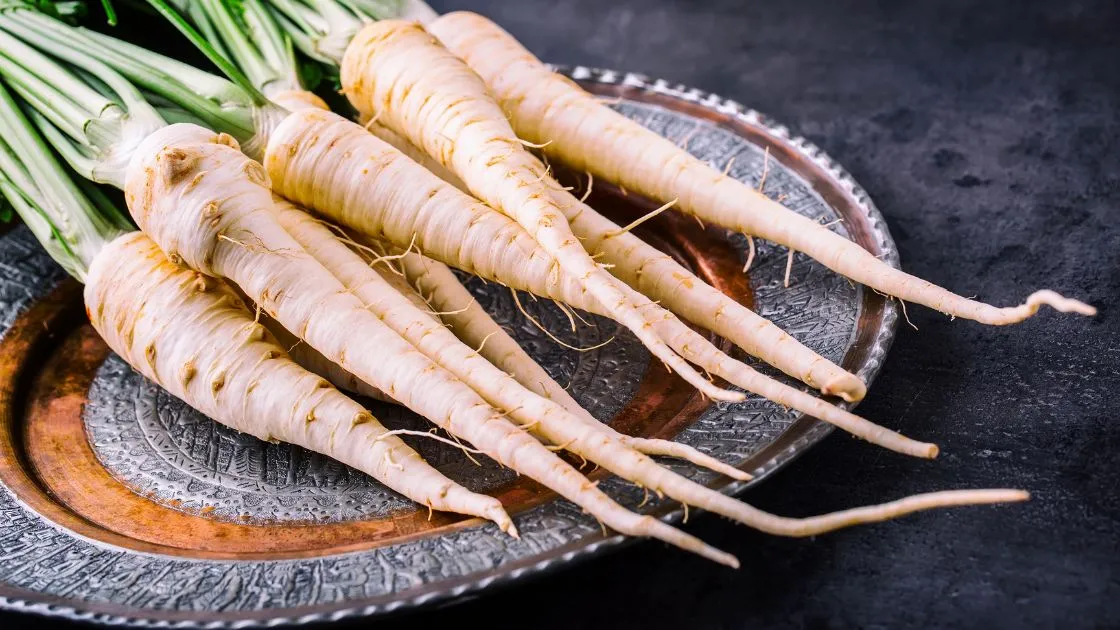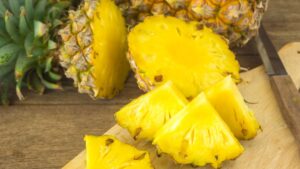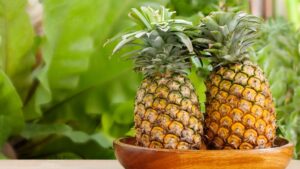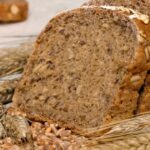- They are rich in vitamins and minerals, making them highly nutrient-dense
- They have a sweet, slightly nutty flavor that adds a distinctive taste to your food
- They are a good soluble and insoluble fiber source, promoting digestive health
- Including them in your diet can help with weight loss and appetite control
- They contain antioxidants and vitamin C, which can support immune function
Parsnips have been consumed for thousands of years because they are rich in vitamins and minerals.
They have long, cream-colored tuberous roots that are closely linked to other vegetables like carrots and parsley roots.
They have a sweet, slightly nutty flavor.
Parsnips provide a distinctive flavor to your food and are also highly nutrient-dense.
For this reason, it has several health advantages.
Read on and learn a little about the history, nutritional value, and health benefits of parsnips.
Physical description
The fleshy root of the plant known as parsnip (Pastinaca sativa) is what gives the vegetable its name.
It is creamy in color and often ranges in length from 20 to 30 cm.
Parsnip taste is very characteristic.
It has a sweet flavor but being a carrot family and a root vegetable, it also has an earthy flavor.
History and production
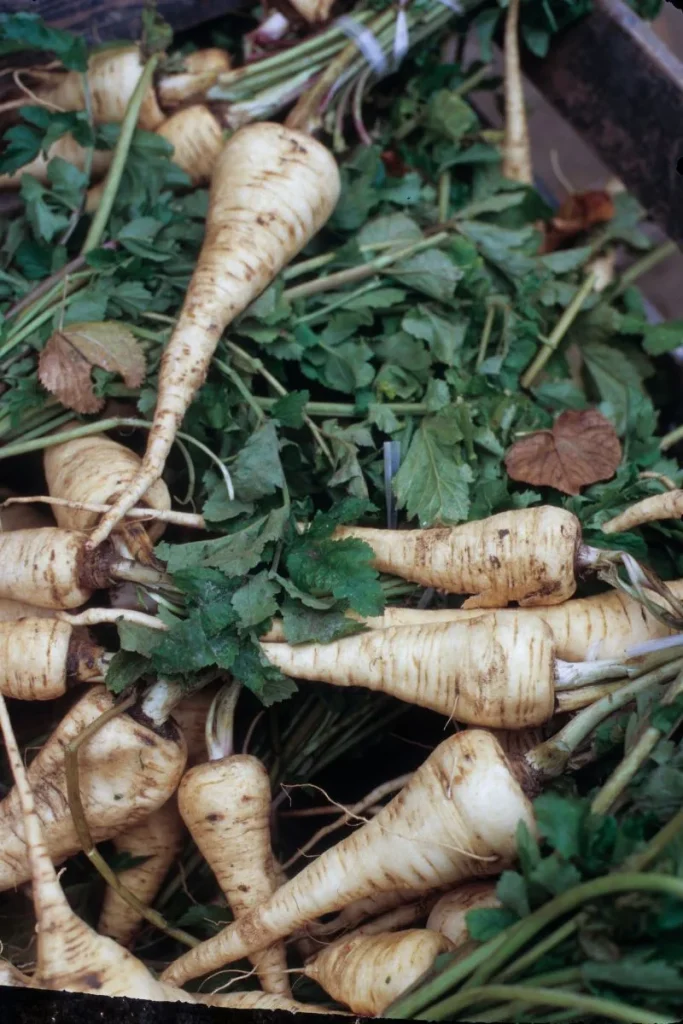
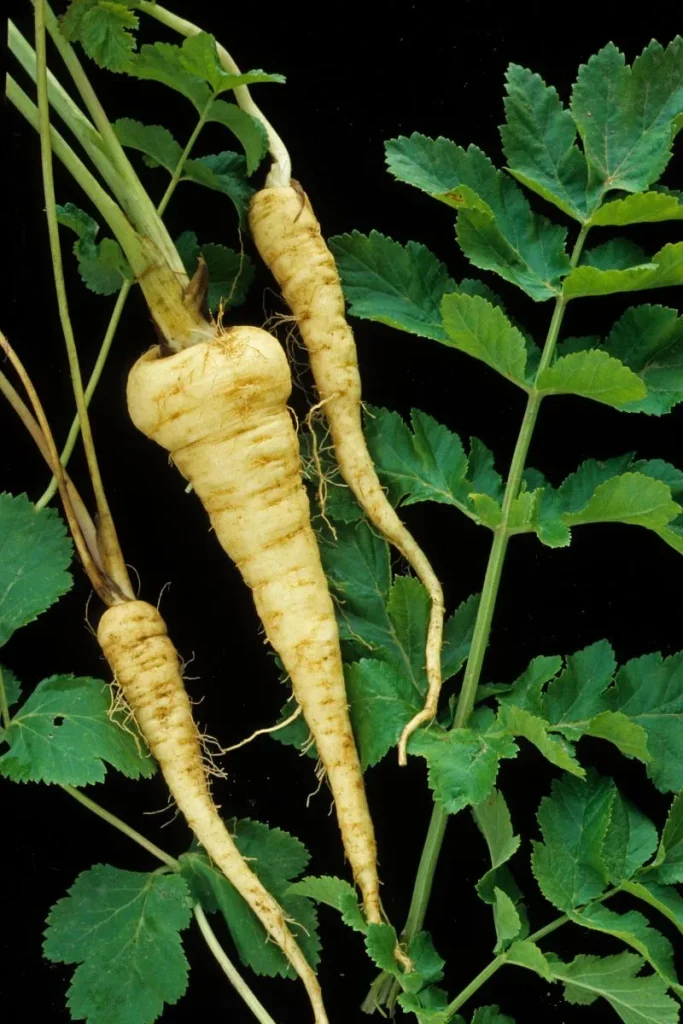
Parsnips are native to Eurasia.
The plant is a member of the umbelliferous genus.
Pastinaca sativa L. is its scientific name.
This plant is grown for its edible root, sometimes known as a parsnip tuber.
Since it has been cultivated for so long, the meatiest and most delicious types have been gradually chosen.
It is a biennial plant with odd-pinnate leaves and a whitish taproot.
The petioles are buckled, and the edges of the leaves are serrated.
The stems develop in the second year of the cycle.
They have holes and ridges and produce classic umbel-shaped inflorescences.
This plant was simultaneously brought to North America by French and British colonists in Canada and the Thirteen Colonies.
However, by the middle of the 19th century, the potato had supplanted it as the primary starch source.
As a result, it was less widely cultivated.
Parsnips have a powerful nutritional value, bringing multiple health benefits.
Keep reading and meet them.
Nutrients of Parsnip
A cup of 133 grams of parsnips contains:
Vitamins
- Thiamin [Vitamin B1] 0.120 mg – 10 % of DV
- Niacin [Vitamin B3] 0.931 mg – 6 % of DV
- Riboflavin [Vitamin B2] 0.067 mg – 5 % of DV
- Vitamin B6 0.120 mg – 7 % of DV
- Pantothenic acid [Vitamin B5] 0.798 mg – 16 % of DV
- Folate, food 89.11 mcg
- Folate, DFE [Vitamin B9] 89.11 mcg – 22 % of DV
- Vitamin E (alpha-tocopherol) 1.98 mg – 13 % of DV
- Vitamin C [Ascorbic acid] 22.6 mg – 25 % of DV
- Vitamin K 29.9 mcg – 25 % of DV
- Tocopherol, alpha 1.98 mg
- Vitamin K1 [Phylloquinone] 29.9 mcg
Minerals
- Copper 0.16 mg – 18 % of DV
- Calcium 47.88 mg – 4 % of DV
- Magnesium 38.57 mg – 9 % of DV
- Iron 0.78 mg – 4 % of DV
- Phosphorus 94.43 mg – 8 % of DV
- Manganese 0.745 mg – 32 % of DV
- Selenium 2.39 mcg – 4 % of DV
- Potassium 498.75 mg – 11 % of DV
- Zinc 0.78 mg 7 % of DV
- Sodium 13.30 mg – 1 % of DV
Proteins and Aminoacids
- Protein 1.60 g – 3 % of DV
Carbohydrates
- Carbohydrate 23.93 g – 9 % of DV
- Sugars 6.38 g
- Fiber 6.52 g – 23 % of DV
- Net carbs 17.41 g
Fats and Fatty Acids
- Saturated fatty acids 0.067 g – 0 % of DV
- Fat 0.399 g – 1 % of DV
- Octadecanoic acid 0.019 g
- Hexadecanoic acid 0.040 g
- Monounsaturated fatty acids 0.149 g
- Tetradecanoic acid 0.004 g
- Octadecenoic acid 0.136 g
- Hexadecenoic acid 0.004 g
- Octadecadienoic acid 0.055 g
- Polyunsaturated fatty acids 0.063 g
- Octadecatrienoic acid 0.004 g
Other
- Water 105.77 g
- Ash 1.30 g
Health Benefits of Parsnips
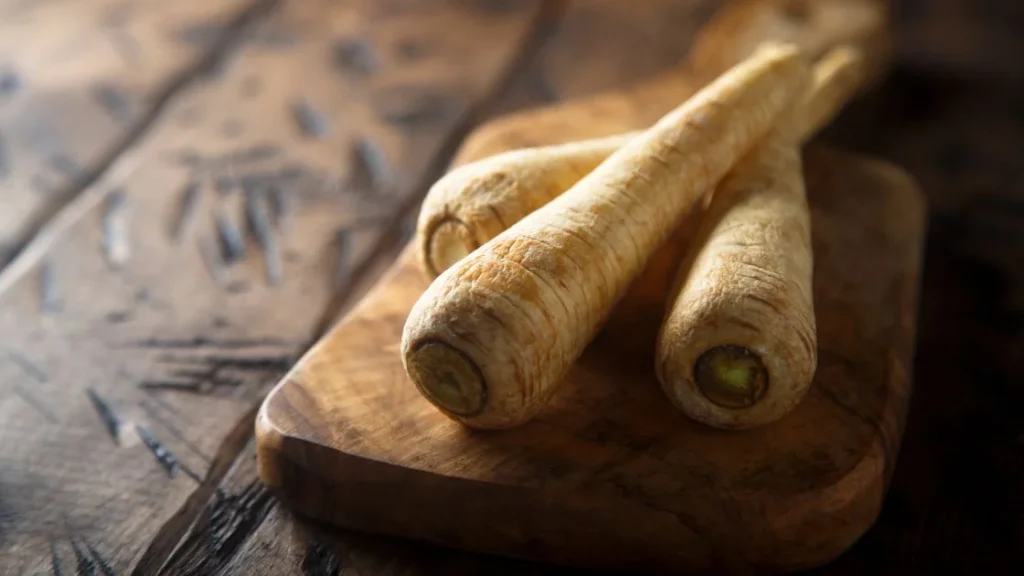
Has fiber soluble and insoluble
Given their high fiber content, it should come as no surprise that parsnips support digestive health.
This vegetable can help with diverticulitis and gastroesophageal reflux.
These are two additional disorders related to the gut.
Parsnips support a wider variety of healthy gut microorganisms because they are rich in soluble and insoluble fiber.
May support efforts to lose weight
According to research, including vegetables like parsnips in your diet will help you feel fuller and more satisfied.
Some weight loss diets are very strict and eliminate the high content of simple carbohydrates.
However, some root vegetables, such as carrots and parsnips, can be eaten in moderation to aid weight loss.
Eliminating carbohydrates from the diet can be counterproductive.
This strategy ignores the additional health benefits of eating these vegetables.
When parsnips are eaten whole, their structure, fibre, and water content can help reduce appetite and improve digestion.
Also, its sweetness can be advantageous when trying to reduce other sugars in the diet.
A good source of antioxidants
Active plant substances such as polyacetylenes, flavonoids, and falcarinol can be found in parsnips.
These antioxidants act as vasodilators, which help control blood pressure.
In addition, these substances have anti-inflammatory, antibacterial, and anticancer effects.
May promote immune performance
One serving (80 g) of parsnips provides one-fifth of the recommended daily vitamin C intake.
This makes it a valuable source of vitamin C.
One food that improves our immune function and supports both innate and adaptive immune responses is vitamin C.
Moreover, the high antioxidant content, which includes apigenin, kaempferol, and quercetin, aids in infection resistance.
Now that you know the benefits of parsnips, learn how to prepare them with these practical recipes.
Cooking Parsnips
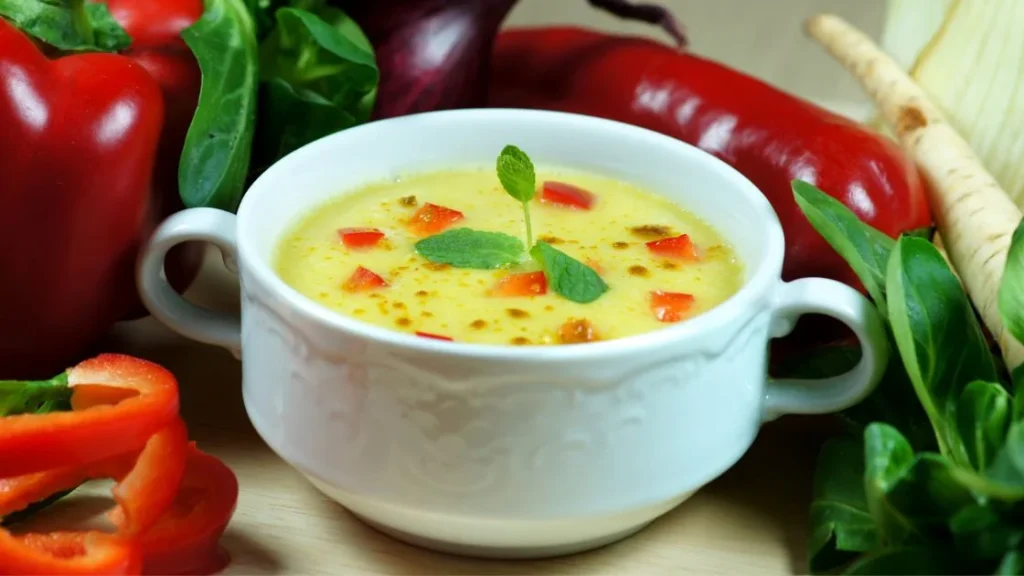
Parsnip and carrot soup
Preparation time: 35 minutes
Serving: 4-6
Ingredients:
- 1 tablespoon olive oil
- 2 celery sticks
- 2 onions
- 1 small bunch of thyme
- 2 garlic cloves
- 2 large parsnips (remove the peel)
- 3 large carrots
- 100 milliliters of double cream
- 1 liter of vegetable stock
- 1 bunch parsley
Procedure
- Fry in hot oil the onion and celery for 10 minutes, stirring regularly until tender.
- Add a small splash of water, garlic, thyme, and black pepper, and cook for 2 minutes.
- Bring the vegetable stock, cut parsnips, and carrots to a boil.
- Stir regularly for 20 minutes or until vegetables are tender.
- Mix gently with a hand mixer.
- Add the cream and mix one more time.
- Pour into bowls and, if desired, top with some chopped parsley to serve.
Crunchy parsnips

Preparation time: 40 minutes
Serving: 8
Ingredients:
- 2 kilograms of parsnip (cut the parsnips in cubes)
- 5 tablespoons of polenta
- 100 milliliters of sunflower oil
- 2 tablespoons of paprika
- Salt and pepper to taste
Procedure
- Set the oven to 220°C/200°F.
- Blanch the parsnips in hot water until they begin to soften.
- Drain, allow to steam dry, then pour into a large bowl.
- Add parsnips to the oil.
- Combine polenta, paprika, and season with salt and pepper.
- Toss the parsnips back and forth with the previous mixture.
- Spread the parsnips out on a baking sheet making sure there is enough space between them.
- Cook in the oven, turning the parsnips for 20 to 25 minutes on each side or until golden and crisp.
In my opinion, parsnips have many nutrients that must be taken advantage of in addition to their sweet and rich flavor. Stevie Smith also loves it:
More data about parsnip:
- The parsnip harvest is ready when the leaves begin to change in late summer or early fall.
- Normally, when parsnips get woody, it’s either because their growth was permitted to become dry.
- Parsnip is the sweeter vegetable root that exists.
- Many people confuse parsnips with turnips and white carrots.
- Some people don’t like parsnips’ earthy flavor and fibrous texture.
- Parsnips chopped in small cubes can be added to any stew and thus enhance their flavor and nutrition.
- Special care must be taken to store parsnips to prevent them from easily shriveling.
- Cook parsnips are simple; they can be prepared bleached, steamed, roasted, and baked.
- Parsnips are best to eat as a side dish with any protein.
- The growing season of parsnips is spring.
- In most popular markets, we can buy parsnips. They are found in the area of vegetables.
- Preparing parsnips is a simple and delicious way to eat vegetables.
- Parsnip cultivation is mainly done from parsnip seeds.
- Many gardeners prefer to grow this plant in fall and winter. According to their experience, they are the ones that grow with the best flavor.
- Younger parsnips don’t need to be peeled; they can be cooked and prepared directly.
- We can store unwashed parsnips, which is a way of preserving their freshness and nutrients.
- Always peel parsnips if you don’t want to add a lot of fiber to your preparation.
Eat a Sweet Parsnip
If you are looking for a slightly sweet root vegetable, parsnip is an excellent alternative.
Its subtle flavor will enchant you, and its multiple benefits will keep you healthy.
It is a tuber that will keep you satiated and provide important nutrients.

I am a professional health and nutrition writer with extensive experience in the industry. My passion for sharing valuable insights on nutrition and wellness stems from over 15 years of personal training and maintaining a healthy lifestyle. My commitment to continuously educate myself on the latest trends and research in the field allows me to deliver high-quality content that is informative and engaging. My mission is to empower individuals to make informed decisions about their health and well-being through my writing.
